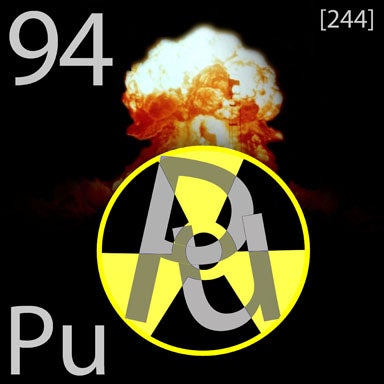Sandia Preparatory School, Albuquerque, New Mexico, U.S.A.

Rachel Greenberg and Michael Womble, Sandia Preparatory School, Albuquerque, New Mexico, U.S.A.
Atomic properties*
Name:
Plutonium
Symbol:
Pu
Atomic
number:
94
Atomic
mass:
(244)
amu
Melting
point:
640°C
Boiling
point:
3228°C
Density:
19.84
g/cm³
Electronegativity:
1.3
#
of
Isotopes:
6
State:
Solid
Colour:
Silvery-white**
Classification:
Metallic**
* Haynes, W. M. (2011). CRC Handbook of Chemistry and Physics, 91st edition: http://www.hbcponline.com/ Retrieved April 7, 2011
** Winter, M. (2010). Home of the Periodic Table. Retrieved April 8, 2011, from Web Elements: http://www.webelements.com/